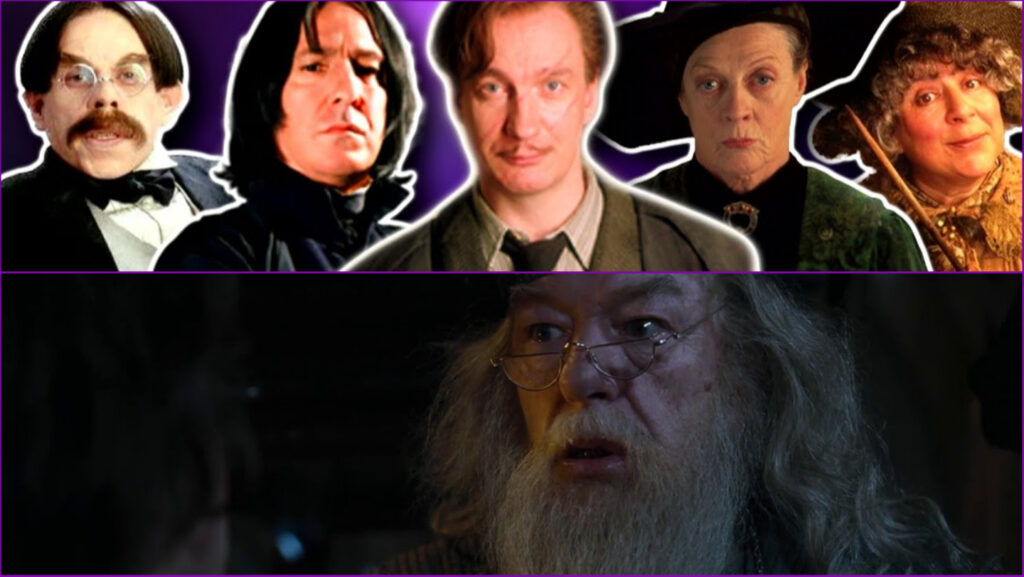In the world of Harry Potter, wizards and witches use spells and incantations to transform objects, people, and even themselves as magic constitutes a fundamental part of daily life.
The Law of Elemental Transfiguration governs the transformation of one element into another in the wizarding world and states that a wizard or witch can transfigure one element into another using magical means, provided they have sufficient skill and knowledge. Mastering this law, which is considered one of the most complex and challenging areas of magic, requires years of study and practice.
You can use Elemental Transfiguration in multiple ways
A wizard or witch can apply the Law of Elemental Transfiguration in several ways, such as transfiguring a piece of wood into gold or turning water into ice, which requires a deep understanding of the properties of each element involved and the ability to control and manipulate magical energy.
However, the Law of Elemental Transfiguration has its limitations, as the transformation of one element into another can cause unexpected and potentially dangerous reactions. The wizarding world generally considers elemental transfiguration to be highly dangerous and unstable, with the risk of failure or unintended consequences increasing as the transformation becomes more complex.
Despite the risks, skilled wizards and witches use the Law of Elemental Transfiguration as a powerful and important tool in the wizarding world. Many ancient and powerful spells and incantations use elemental transfiguration as a cornerstone and to perform feats of great magic.
In conclusion, the Law of Elemental Transfiguration is a fascinating and complex aspect of the wizarding world that requires deep knowledge and skill to master. Approaching elemental transfiguration with caution and respect for its power and potential risks is essential, as it is both powerful and dangerous, like all areas of magic.
Gamp’s Law of Elemental Transfiguration
In the Harry Potter series, Hesper Gamp developed Gamp’s Law of Elemental Transfiguration, which governs the transformation of one element into another and is named after her. It is considered one of the most important laws of magic in the wizarding world.
Gamp’s Law of Elemental Transfiguration is related to the Law of Elemental Transfiguration mentioned above, as it is also concerned with the transfiguration of one element into another. However, it is a specific branch of this law that deals with food and its properties, such as the inability to conjure food out of thin air or the inability to create food from non-food substances.
Many wizards and witches still remember and respect Hesper Gamp as a legendary figure in the Harry Potter series, as she made significant contributions to the field of magical theory, particularly her work on the Law of Elemental Transfiguration, which has had a considerable impact on the wizarding world.
Potential Dangers
- Unintended Consequences: Elemental transfiguration has the potential to cause unintended consequences that could be harmful to the user or others. Using an incorrect element or performing the transfiguration incorrectly could lead to dangerous chemical reactions, explosions, or other hazards, for instance.
- Power and Control: Elemental transfiguration is a powerful magic that requires a great deal of skill and control. If used irresponsibly or without proper training, it could lead to the loss of control, which could have disastrous consequences.
- Ethical Considerations: The use of elemental transfiguration raises ethical considerations about the use of magic to alter the natural world. Some may argue that such magic is unnatural and could have unforeseen consequences for the environment or the world around us.
- Physical and Mental Exhaustion: The practice of elemental transfiguration requires a great deal of physical and mental energy, and it could take a toll on the user’s health and well-being. Repeated or prolonged use could lead to physical exhaustion, mental fatigue, or other health issues.
Before attempting to use this kind of magic, it is essential to carefully consider the significant risks posed by elemental transfiguration, despite its potential benefits and great power.
Known Wizards and Witches to Master the Elemental Transfiguration
- Albus Dumbledore: People knew him as an incredibly powerful wizard with an extensive understanding of magic. He was able to control the elements and perform powerful spells that utilized them.
- Minerva McGonagall: As the Head of Gryffindor House and Transfiguration Professor at Hogwarts School of Witchcraft and Wizardry, McGonagall was a skilled witch who had an advanced understanding of the elements. She was able to perform complex transfigurations involving the elements and had a reputation for being an expert in her field.
- Severus Snape: Snape was a gifted wizard and was particularly skilled in the field of dark magic. He was also an accomplished transfiguration wizard and was able to perform advanced transfigurations involving the elements.
- Hermione Granger: Hermione was known to be one of the brightest students at Hogwarts and had a particular talent for transfiguration. She was able to perform complex spells that involved the elements and had a deep understanding of magical theory.
- Lord Voldemort: Voldemort’s immense power and mastery over many forms of magic made him a renowned dark wizard. He was able to control the elements and perform powerful spells that utilized them, making him a formidable opponent.
If you have any questions about this article, feel free to share them in the comments below. For more content, stay with us, here at Spiel Times.
Make sure you subscribe to our push-notifications and never miss an update from the world of video games, cinema, and sports. You can also follow us on Twitter @spieltimes for the latest PS5 restock and drop. Until next time, Stay Safe and Happy Gaming!
